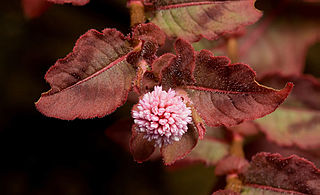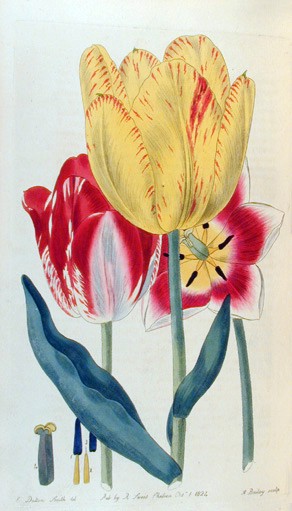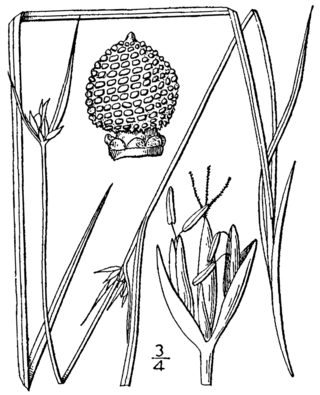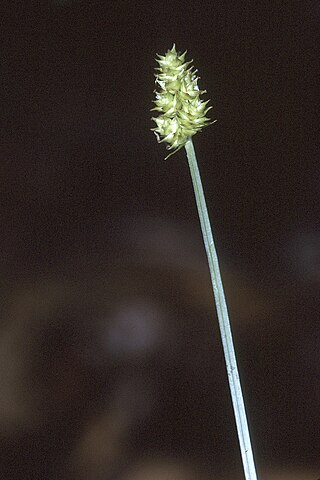
Alders are trees comprising the genus Alnus in the birch family Betulaceae. The genus comprises about 35 species of monoecious trees and shrubs, a few reaching a large size, distributed throughout the north temperate zone with a few species extending into Central America, as well as the northern and southern Andes.

Persicaria is a genus of herbaceous flowering plants in the knotweed family, Polygonaceae. Plants of the genus are known commonly as knotweeds or smartweeds. It has a cosmopolitan distribution, with species occurring nearly worldwide. The genus was segregated from Polygonum.

Cardamine is a large genus of flowering plants in the mustard family, Brassicaceae, known as bittercresses and toothworts. It contains more than 200 species of annuals and perennials. Species in this genus can be found in diverse habitats worldwide, except the Antarctic. The name Cardamine is derived from the Greek kardaminē, water cress, from kardamon, pepper grass.

Bartonia is a genus of the gentian family, tribe Gentianeae, subtribe Swertiinae. Members of this genus are called screwstems. Bartonia was also the name of a genus in the Loasaceae family, but those species are now generally classified under the genus Mentzelia.

Myrica is a genus of about 35–50 species of small trees and shrubs in the family Myricaceae, order Fagales. The genus has a wide distribution, including Africa, Asia, Europe, North America and South America, and missing only from Australia. Some botanists split the genus into two genera on the basis of the catkin and fruit structure, restricting Myrica to a few species, and treating the others in Morella.

Robert Sweet was an English botanist, horticulturist and ornithologist.

Desmodium is a genus of plants in the legume family Fabaceae, sometimes called tick-trefoil, tick clover, hitch hikers or beggar lice. There are dozens of species and the delimitation of the genus has shifted much over time.

Symphyotrichum is a genus of over 100 species and naturally occurring hybrids of herbaceous annual and perennial plants in the composite family Asteraceae, most which were formerly treated within the genus Aster. The majority are endemic to North America, but several also occur in the West Indies, Central and South America, as well as in eastern Eurasia. Several species have been introduced to Europe as garden specimens, most notably New England aster and New York aster.

The genus Cacalia L. is a nomen rejiciendum under the International Code of Nomenclature for algae, fungi, and plants. The type species C. alpina L. has been transferred to Adenostyles alpina (L.) Bluff & Fingerh., and the former species of Cacalia now reside in a few different genera.

Grona triflora, known as creeping tick trefoil or three-flower beggarweed, is a plant in the family Fabaceae. It is native to tropical regions around the globe and introduced to subtropical regions including the southern United States.

Hylodesmum is a genus of flowering plants in the family Fabaceae, sometimes called ticktrefoils or tick-trefoils. It is sometimes treated as part of Desmodium.

Bistorta is a genus of flowering plants in the family Polygonaceae. As of February 2019 about 40 species are accepted. It has been supported as a separate clade by molecular phylogenetic analysis. Bistorta species are native throughout much of the Northern Hemisphere, as far south as Mexico in North America and Thailand in Asia.

Scleria pauciflora, known as few-flowered nutrush, papillose nut-sedge, and Carolina-whipgrass, is a plant in the sedge family (Cyperaceae) native to northern Mexico, the eastern United States, southern Canada, and Cuba. It is common across a broad stretch of the southeastern United States in many different habitat types, becoming rare at the northern end of its distribution.

Carex lupulina, known as hop sedge or common hop sedge, is a species of sedge native to most of eastern North America.

Carex stipata, variously called the prickly sedge, awl-fruited sedge, awlfruit sedge, owlfruit sedge, swamp sedge, sawbeak sedge, stalk-grain sedge and common fox sedge, is a species of flowering plant in the genus Carex, native to Canada, the United States, China, Korea, Japan, and Far Eastern Russia. It is a wetland obligate.

Carex pedunculata, the long-stalk sedge or longstalk sedge, is a species of flowering plant in the genus Carex, native to Canada and the central and eastern United States. Its seeds are dispersed by ants.

Carex cephalophora, called the oval-leaf sedge, oval-headed sedge, woodbank sedge, and short-headed bracted sedge, is a species of flowering plant in the genus Carex, native to the central and eastern United States and southeastern Canada, and introduced to Germany. It is found in late-succession old fields, even those that have become shaded woodlands.
Verdesmum is a monotypic genus of flowering plants belonging to the family Fabaceae. It only contains one known species, Verdesmum hentyi. It is also within the tribe Desmodieae, with another species Verdesmum menglaense but this was transferred to the Hylodesmum genus in 2019.

















